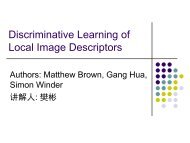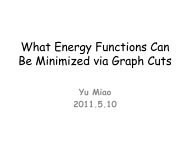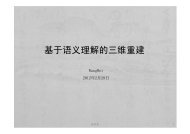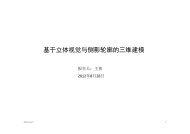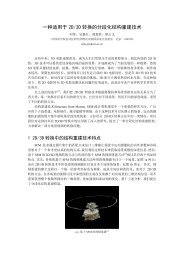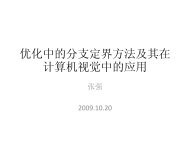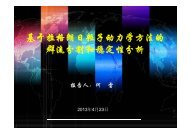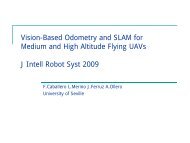Rotationally Invariant Descriptors using Intensity Order ... - IEEE Xplore
Rotationally Invariant Descriptors using Intensity Order ... - IEEE Xplore
Rotationally Invariant Descriptors using Intensity Order ... - IEEE Xplore
You also want an ePaper? Increase the reach of your titles
YUMPU automatically turns print PDFs into web optimized ePapers that Google loves.
This article has been accepted for publication in a future issue of this journal, but has not been fully edited. Content may change prior to final publication.<br />
<strong>IEEE</strong> TRANSACTION ON PATTERN ANALYSIS AND MACHINE INTELLIGENCE 4<br />
invariant. In addition, the ordinal information is encoded into descriptor by this pooling<br />
scheme. Therefore, the constructed descriptors could have high discriminability while be<br />
rotation invariant. Fig. 1 shows the matching results of corresponding points whose ori-<br />
entation estimation errors are larger than 20 o (orientations are estimated by the method<br />
used in [6]). Although these corresponding points can be hardly matched by SIFT due to<br />
large orientation estimation errors, many of them can be correctly matched by our proposed<br />
descriptor (MROGH).<br />
• Multiple support regions are used for descriptor construction to further improve its discrim-<br />
inative ability. Although two non-corresponding points may have similar appearances in a<br />
certain size of support region, they usually can be easily distinguished in a different size of<br />
support region. Therefore, by constructing our descriptors from multiple support regions,<br />
their discriminative abilities are further enhanced.<br />
All these factors contribute to the good performance of our proposed descriptors. Their<br />
effectiveness and superiorities have been evaluated on image matching and object recognition<br />
tasks.<br />
This paper is an extension of our previous work [17]. Specifically, the extensions include:<br />
(1) An in-depth analysis of the rotation invariance of local descriptors.<br />
(2) The MRRID descriptor is introduced to tackle large illumination changes.<br />
(3) A detailed description of the construction of our descriptors as well as a discussion about<br />
their properties.<br />
(4) Experiments on object recognition and much more results on image matching.<br />
The rest of this paper is organized as follows: Section II gives a brief overview of related<br />
work. Section III presents an experimental study on the rotation invariance of local descriptors.<br />
Construction of our proposed descriptors is elaborated in Section IV, followed by the experiments<br />
in Section V. Finally, conclusions are presented in Section VI.<br />
II. RELATED WORK<br />
Generally speaking, there are three main steps in matching points by local image descriptors.<br />
The first step is to detect points in images. The detected points should be detectable and matchable<br />
across images which are captured under different imaging conditions. Such points are called<br />
interest points or feature points in the literature. Harris [18] and DoG (Difference of Gaussian) [6]<br />
November 26, 2011 DRAFT



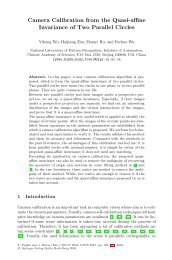
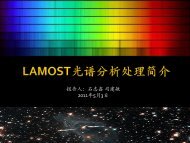
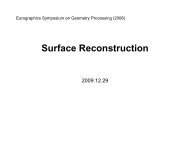
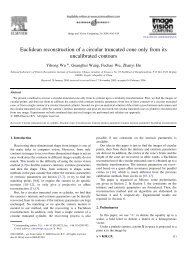
![Accurate, Dense, and Robust Multi-View Stereopsis (PMVS) [1,2,3]](https://img.yumpu.com/19388840/1/190x135/accurate-dense-and-robust-multi-view-stereopsis-pmvs-123.jpg?quality=85)
